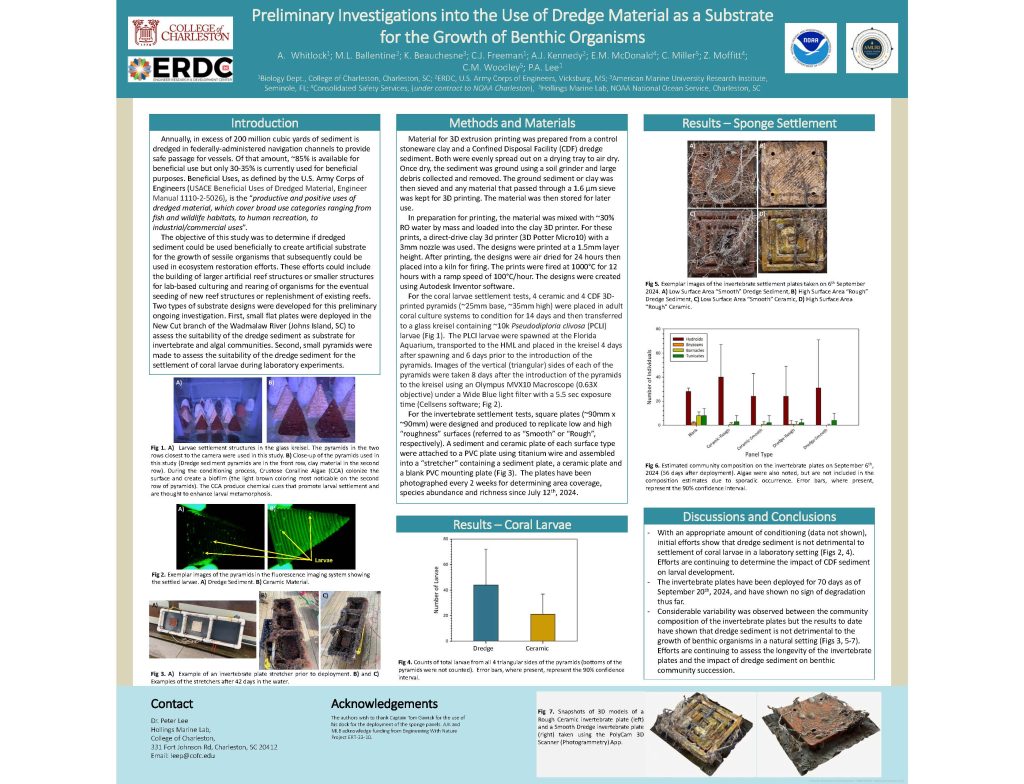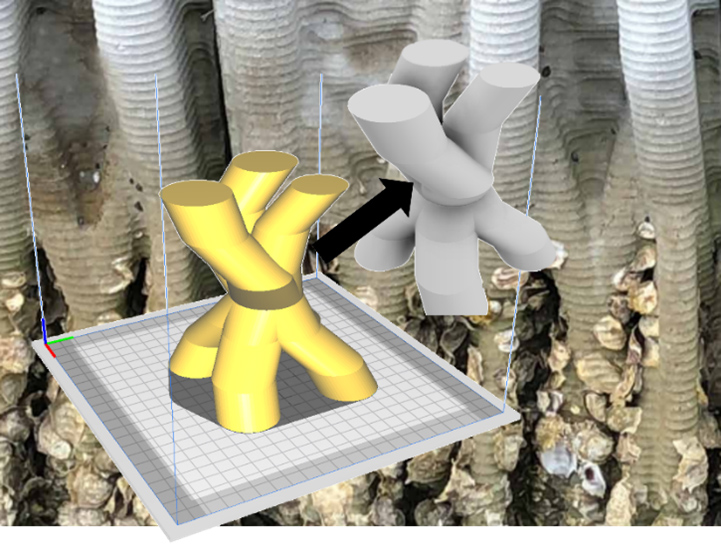Presented at Hollings Marine Lab (HML) Science Day at the Fort Johnson Marine Science Complex in Charleston, South Carolina, on October 3, 2024. HML Science Day is a day-long symposium to showcase research activities at the HML and foster further collaborative discussions amongst researchers.
Annually, in excess of 200 million cubic yards of sediment is dredged in federally‐administered navigation channels to provide safe passage for vessels. Of that amount, ~85% is available for beneficial use but only 30‐35% is currently used for beneficial purposes. Beneficial Uses, as defined by the U.S. Army Corps of Engineers (USACE Beneficial Uses of Dredged Material, Engineer Manual 1110‐2‐5026), is the “productive and positive uses of dredged material, which cover broad use categories ranging from fish and wildlife habitats, to human recreation, to industrial/commercial uses”.
The objective of this study was to determine if dredged sediment could be used beneficially to create artificial substrate for the growth of sessile organisms that subsequently could be used in ecosystem restoration efforts. These efforts could include the building of larger artificial reef structures or smaller structures for lab‐based culturing and rearing of organisms for the eventual seeding of new reef structures or replenishment of existing reefs. Two types of substrate designs were developed for this preliminary ongoing investigation. First, small flat plates were deployed in the New Cut branch of the Wadmalaw River (Johns Island, SC) to assess the suitability of the dredge sediment as substrate for invertebrate and algal communities. Second, small pyramids were made to assess the suitability of the dredge sediment for the settlement of coral larvae during laboratory experiments.



